HS-ESS1-2
Construct an explanation of the Big Bang theory based on astronomical evidence of light spectra, motion of distant galaxies, and composition of matter in the universe.
-
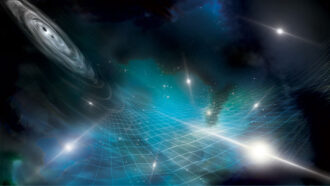 Space
SpaceNewfound gravitational waves may be from the biggest black holes in the universe
Observations of dead stars hint that ripples in spacetime — ripples light-years long — roll through our universe.
-
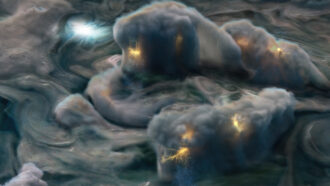 Space
SpaceLightning dances through Jupiter’s skies much like it does on Earth
Data from NASA’s Juno spacecraft hint that Jupiter’s lightning extends in jagged steps as it does on Earth.
By Nikk Ogasa -
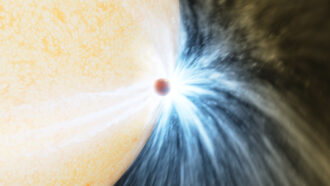 Planets
PlanetsIn a first, telescopes have caught a star eating a planet
A burst of light and a cloud of dust are signs that a distant star swallowed a giant planet.
-
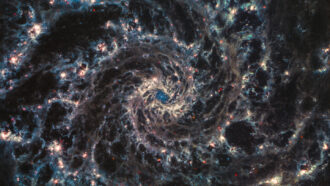 Space
SpaceJames Webb telescope catches newborn stars sculpting spiral galaxies
Dark voids riddle the galaxies, revealing new details about how stars alter their environments.
-
 Tech
TechA new solar-powered gel purifies water in a flash
The unusual, fruit-inspired structure of this material provides quick filtration that could satisfy people's daily water needs.
-
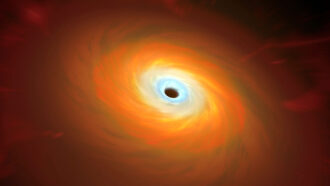 Space
SpaceScientists Say: Accretion Disk
Cosmic swirls of gas, dust and plasma, accretion disks reveal the shadowy silhouettes of black holes and more.
-
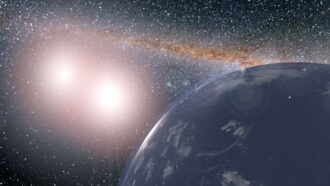 Planets
PlanetsPlanets like Star Wars’ Tatooine could be fit for life
Like Luke Skywalker’s home, planets orbiting two stars may be plentiful. A new computer model suggests that many of those worlds could sustain life.
-
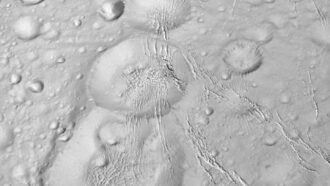 Planets
PlanetsSaturn’s moon Enceladus wears a thick blanket of snow
Pits on the frosty moon reveal the snow’s surprising depth, up to 700 meters (2,300 feet) in some places.
-
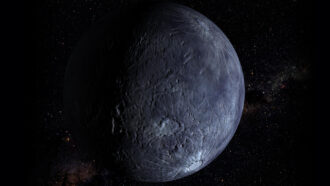 Planets
PlanetsThe dwarf planet Quaoar hosts an impossible ring
Quaoar’s ring lies outside the Roche limit. That’s an imaginary line beyond which rings aren’t thought to be stable.
-
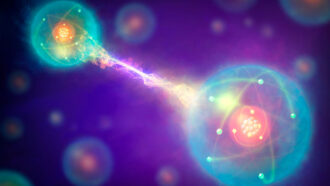 Physics
PhysicsLet’s learn about the quantum realm
On the smallest scales, the universe behaves in some pretty strange ways.
-
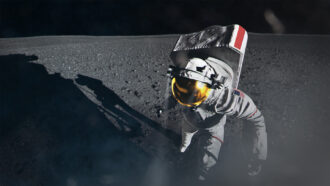 Space
SpaceNASA is readying to send humans back to the moon
The launch of NASA's Artemis I is a huge step toward sending humans back to the moon and beyond.
By Liz Kruesi -
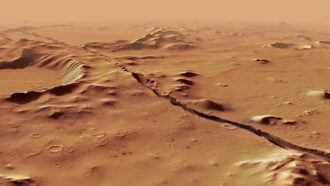 Planets
PlanetsMars might still be volcanically active, quakes there suggest
Seismic rumblings picked up by NASA’s InSight lander hint at molten rock moving deep below the planet’s fractured surface.